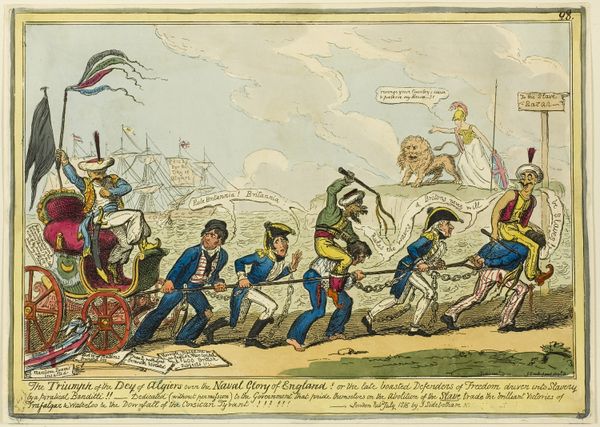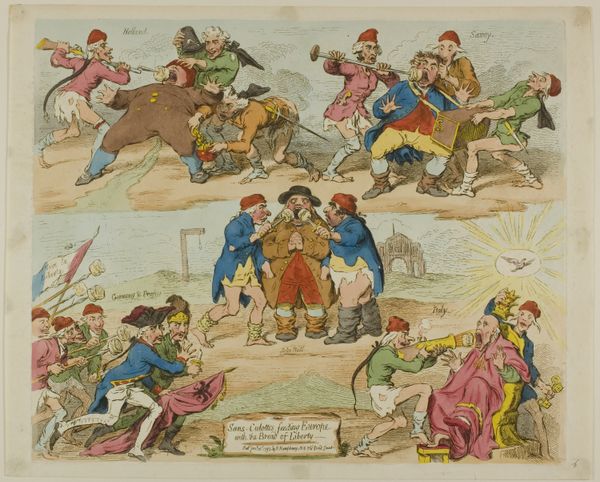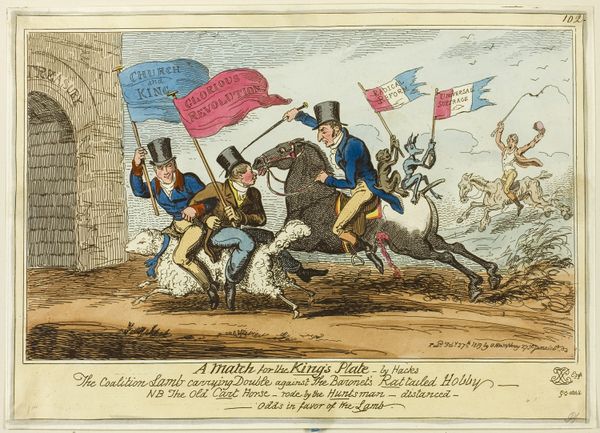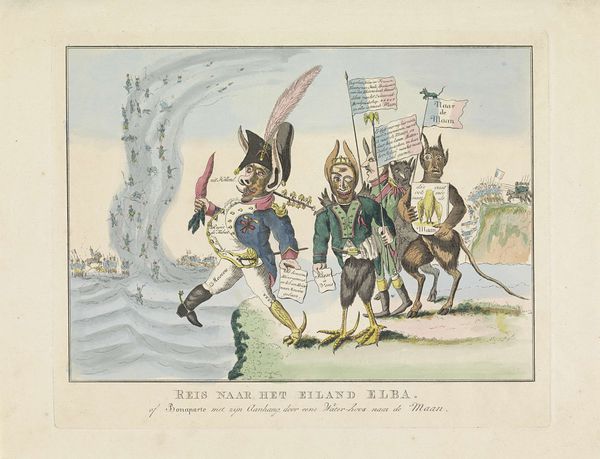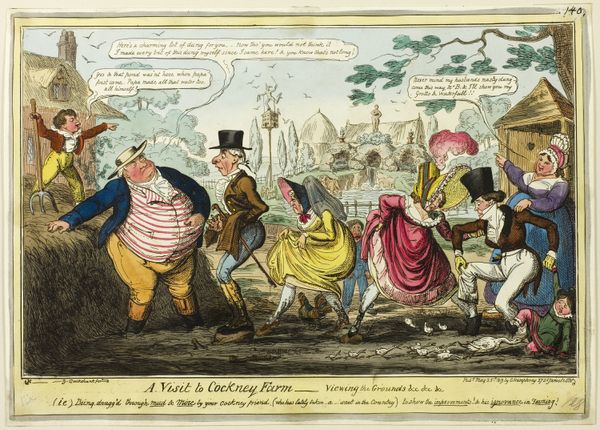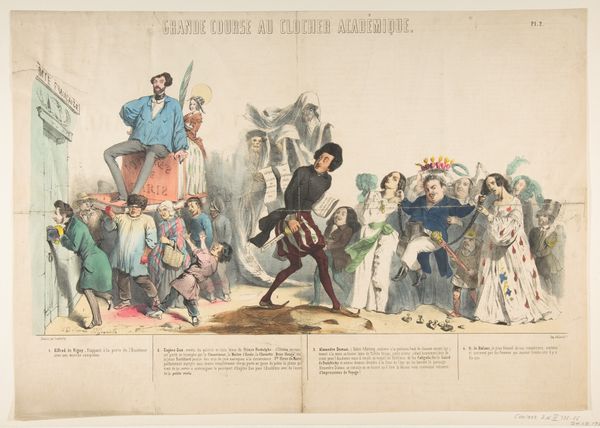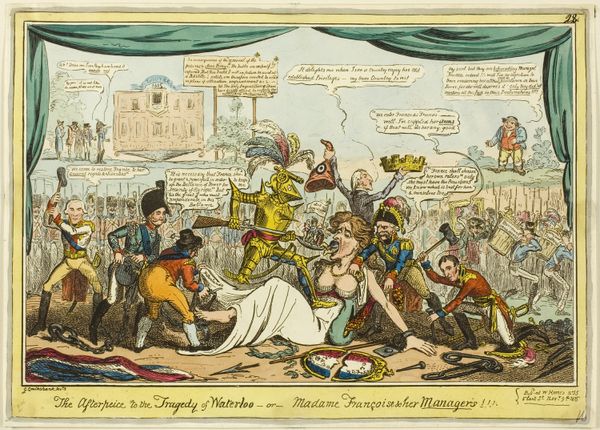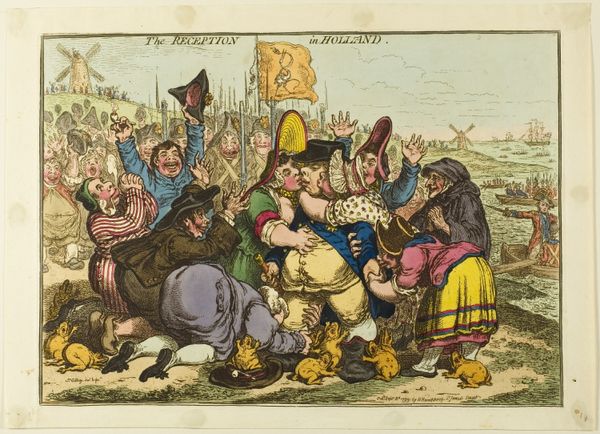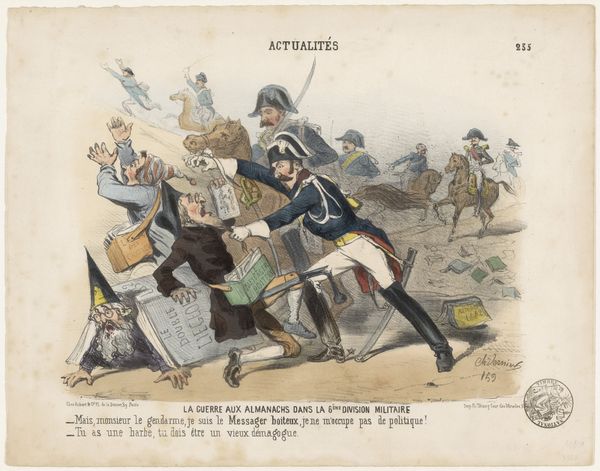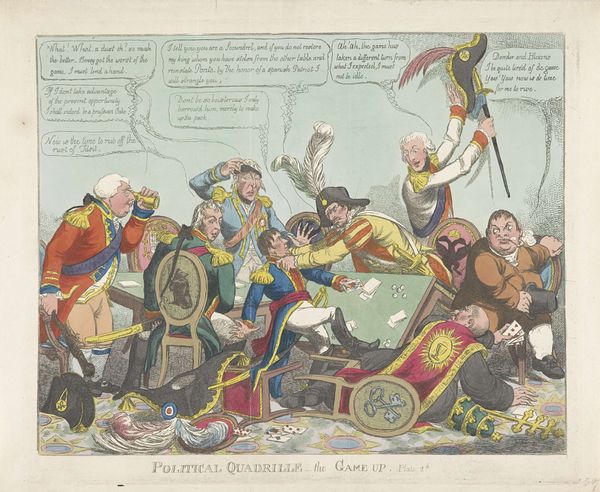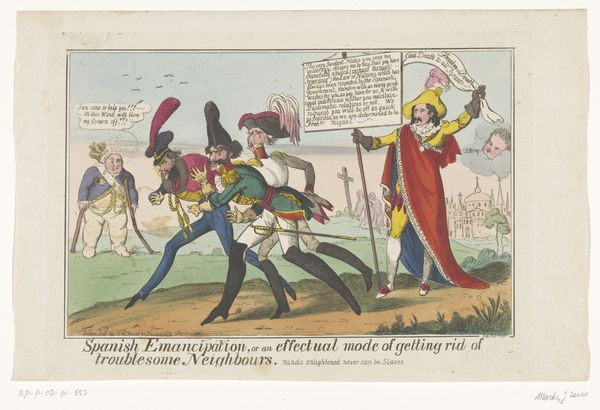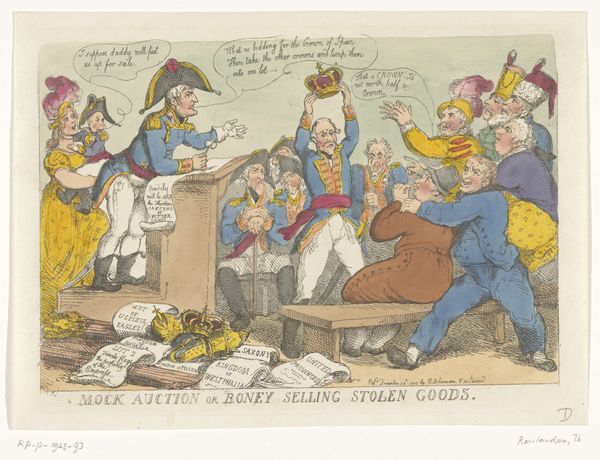
Carlo the Great, Running Away with the East Indes Possibly 1806
0:00
0:00
drawing, print, etching, paper, watercolor
#
drawing
#
water colours
# print
#
etching
#
caricature
#
paper
#
watercolor
#
history-painting
Dimensions: 327 × 445 mm (image); 350 × 462 mm (plate); 390 × 505 mm (sheet)
Copyright: Public Domain
Editor: This print, “Carlo the Great, Running Away with the East Indes,” possibly from 1806, is by Charles Williams. It uses etching and watercolor on paper and currently resides at The Art Institute of Chicago. It’s clearly a caricature, full of action and chaos. What sense do you make of all of the imagery? Curator: It is fascinating how the symbols operate on multiple levels. The figure "Carlo the Great," presumably a reference to someone of political power at the time, is visualized with a bulging sack labeled with words ending with "-ence", filled with architectural models reminiscent of India. What does it mean to carry away the "Indes"? Editor: It does look like he's absconding with treasure or, perhaps more abstractly, with influence? The whole scene looks rife with satire of imperialism. Curator: Indeed. The characters brandishing swords, shields, and colonial flags around him, along with the collapsing edifice, are all performing their roles. It's an active representation of colonial enterprise and ambition, steeped in cultural memory. Williams uses specific imagery to elicit very particular emotions. Notice how different groups have different sets of motivations. Who is wielding violence? Who seems dispossessed and impoverished? Who follows at heel? Editor: It almost seems like everyone is trying to take something from the collapsing buildings. A commentary on societal avarice perhaps? Curator: Precisely! And through that critical lens, it's interesting to question what continuity the piece might reveal in modern politics and finance. Can you draw any comparisons with modern life? Editor: Absolutely. Thinking about current debates around corporate accountability and global resource management makes this piece still feel relevant today. Curator: Indeed! It's a perfect example of how art from the past, using familiar symbols, can continue to spark fresh dialogues and understanding.
Comments
No comments
Be the first to comment and join the conversation on the ultimate creative platform.
